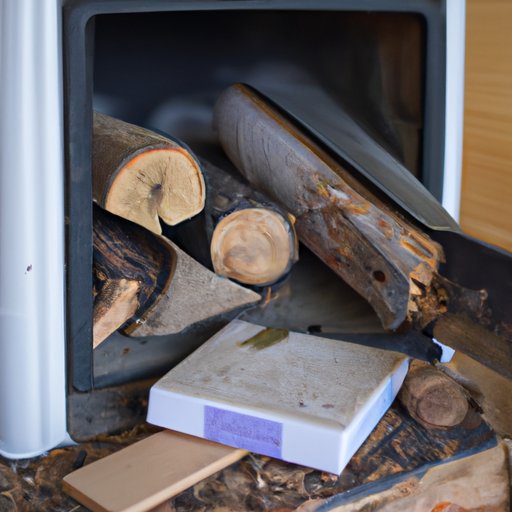Introduction
Wood stoves provide a great way to heat your home and create a cozy atmosphere. With proper maintenance and use, they can be an efficient and reliable source of heat. Starting a fire in a wood stove requires some planning and preparation, but it can be done with ease. In this article, we will explore the process for starting a fire in a wood stove, from gathering the materials needed to monitoring and adjusting the air flow.
Gather Materials Needed
Before you begin, you need to gather the materials necessary for starting a fire in a wood stove. These include kindling, tinder, firewood, and a match or lighter. Kindling is small pieces of wood, such as twigs or sticks, that are used to get the fire going. Tinder is material that is easily combustible, such as dry leaves or paper. Firewood should be dry and seasoned, and it should be cut into small pieces. Finally, you will need a match or lighter to ignite the fire.
Place the Kindling
Once you have gathered the materials, you can begin the process of starting a fire. The first step is to arrange the kindling in the firebox of the stove in a criss-cross pattern. This will ensure that the fire has plenty of air circulation and that the flames spread quickly. According to the University of Minnesota Extension Service, “The more open the kindling structure, the more air that can reach the burning wood, allowing the fire to start quicker and burn hotter.”
Place the Tinder
Next, place the tinder on top of the kindling in the center of the firebox. Be sure to leave some space between the kindling and the walls of the firebox, as this will allow air to circulate and help the fire to spread.
Light the Tinder
Once the kindling and tinder are in place, use a match or lighter to ignite the tinder. The flames should spread quickly to the kindling and then to the firewood. You may need to blow gently on the fire to help it get started.
Add Small Pieces of Firewood
Once the fire is lit, gradually add small pieces of firewood. Be sure to leave some space between each piece to allow air to circulate and keep the fire burning. The key is to add small pieces at a time and allow the fire to build up slowly.

Add Larger Pieces of Firewood
As the fire grows stronger, you can add larger pieces of firewood. Again, be sure to leave some space between each piece to allow air to circulate and keep the fire burning. As the fire grows, you may need to adjust the air flow to maintain a steady burn.

Monitor and Adjust Air Flow
Once the fire is burning steadily, you can adjust the air flow to maintain the desired temperature. According to the Chimney Safety Institute of America, “The amount of air entering the firebox can be controlled by adjusting the primary, secondary and tertiary air controls.” By monitoring the fire and adjusting the air flow, you can ensure that the fire stays burning for a long period of time.
Conclusion
Starting a fire in a wood stove requires some preparation and planning, but it can be done with ease. Gather the necessary materials, arrange the kindling and tinder, light the fire, and adjust the air flow to maintain a steady burn. With a little practice, you can become an expert at starting a fire in a wood stove.
(Note: Is this article not meeting your expectations? Do you have knowledge or insights to share? Unlock new opportunities and expand your reach by joining our authors team. Click Registration to join us and share your expertise with our readers.)
